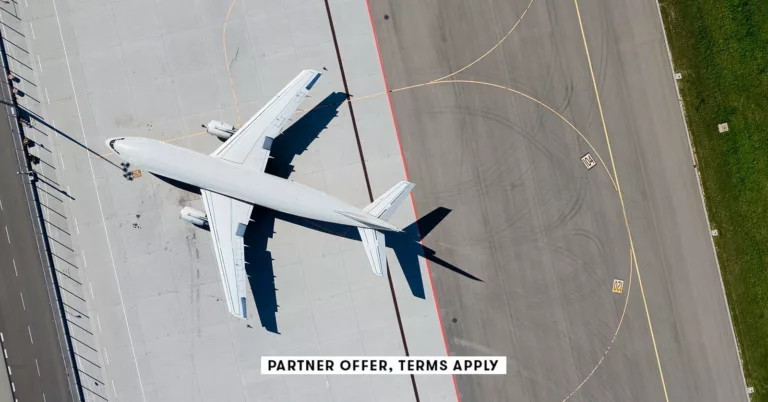Unlock Savings: 7 Essential Tools for Flight Refunds
Airfare prices are notoriously unpredictable, often changing from one moment to the next. Fortunately, many airlines allow you to change your flights without incurring fees (as long as you’re not on a basic economy ticket). This means you can potentially secure a refund or airline credit by rebooking your ticket at a lower price. However, with frequent travel, it can be challenging to keep track of fare fluctuations and remember to rebook. To streamline this process, we’ve compiled a list of seven tools designed to help you maximize your savings on flights, from free price alerts to full-service claims assistance.
1. JetBack: Hassle-Free Flight Monitoring
One of the simplest ways to save on airfare is to use a service that manages the process for you. JetBack is a relatively new app that takes the legwork out of tracking fare drops. Once you forward your flight itinerary to them, the JetBack team does the rest.
JetBack continuously monitors your eligible flights for price drops. When a lower fare is available, they file a claim with the airline to request a credit for the difference. This service is applicable for flights booked through major airlines like Delta, United, American, Southwest, Alaska, and JetBlue.
For just $100 a year, you can access unlimited flight credits. While this may not be economical for infrequent travelers, if you fly often, the savings can quickly surpass the subscription cost. However, keep in mind that you must be the name on the reservation to utilize JetBack’s services.
2. Autopilot: Automatic Fare Tracking
Autopilot takes convenience a step further by automatically importing your flight details once you link your Gmail account. You can also manually input your reservations or forward your confirmation emails. If your fare drops by $20 or more, Autopilot will rebook you in the same fare class without any action needed on your part.
With Autopilot’s pay-as-you-go plan, you only pay a commission (25%) when you successfully save money. Alternatively, you can opt for a Pro plan at $9.99 per month or $99 per year, which reduces the commission to 15% and provides additional benefits such as rebates on award flights.
Autopilot supports flights with American, Delta, and United (excluding basic economy), and you can utilize it for tickets booked for friends and family as well.
3. Capital One Travel: Free Price Drop Protection
For those who prefer not to pay for services, Capital One Travel offers a unique feature: free price drop protection. However, this benefit is only activated when the portal’s algorithm suggests you “book now.” After booking, Capital One monitors the flight price for 10 days. If the fare drops during this period, you’ll receive a refund for the difference, up to $50.
While this service is automatic and free, some other platforms like Expedia and Google Flights offer similar price drop protection for a fee. For example, Expedia checks your flight price daily and refunds the fare difference post-trip if a lower price is found. However, remember that these paid options come with no guarantees, so weigh the cost against potential savings.
4. Google Flights: Set Price Alerts
If you prefer a DIY approach, many travel booking sites, including Google Flights, allow you to set free price alerts. You can customize your search filters to focus on specific flights or a range of options, and receive an email notification when prices change.
Similar price alert features are available on platforms like Expedia, Kayak, and Skyscanner. For Capital One cardholders using the issuer’s travel portal, you can activate notifications by clicking “Watch this trip,” although some airlines, like Southwest, may not be included.
5. TripIt Pro: Comprehensive Trip Management
For frequent travelers, TripIt Pro can be a valuable tool. This trip planning app not only organizes your travel itinerary but also notifies you of any price drops for your booked flights. With a subscription fee of $49 per year, TripIt Pro offers additional features like alerts for better seat availability and check-in reminders, making it a worthwhile investment for those who travel often.
6. FlightAware: Real-Time Flight Tracking
FlightAware is another useful tool for travelers. While it primarily focuses on real-time flight tracking, it can also provide insights into fare trends based on historical data. This can help you make informed decisions about when to book your flights.
7. Skyscanner: Flexible Search Options
Skyscanner is well-known for its comprehensive search capabilities. It allows you to explore flexible dates and set alerts for price drops. With its user-friendly interface, you can easily compare fares across multiple airlines and booking platforms, ensuring you find the best deal available.
Conclusion
With these tools at your disposal, you can simplify the process of finding savings on flights and potentially put money back in your wallet. Even minor fare drops can accumulate significant savings over time, especially for frequent flyers. While some options come with fees, others provide free services that can help you stay informed about price changes.
Ultimately, the right choice depends on your travel habits and preferences. Whether you decide to invest in a subscription service, utilize price drop protection, or set up alerts, these resources can help you navigate the often complex world of airfare pricing. By leveraging these tools, you can maximize your travel budget and enjoy your journeys even more.







